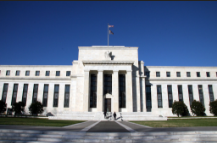Stagflation Appears while the Fed Wonders "Why is Inflation so Low?"
The Federal Reserve and the world’s other central banks have created money and credit at an unprecedented rate since the 2008 crash. Money creation used to be called inflation. Now, the result of money creation, higher prices, is called inflation. Frank Shostak explains,
Once inflation is defined as a general rise in prices, then anything which contributes to price rises is called inflationary and therefore must be guarded against. It is no longer the central bank and fractional reserve banking that are the sources of inflation, but rather various other causes. In this framework, not only has the central bank nothing to do with inflation, but on the contrary: the bank is regarded as an inflation fighter.
So, after a worldwide QEpalooza, the markets are shocked, shocked as Bloomberg reported, “The consumer price index rose 0.5 percent from the previous month, above the median estimate of economists for a 0.3 percent increase.”
David Stockman annualizes the numbers to amplify the effect.
January's in-coming data brought a 6.7% annualized CPI rate and a negative 3.1% annualized retail sales print.
Can you say stagflation!
Nathan Sheets, chief economist for PGIM Fixed Income and a former Fed and Treasury official, is more sanguine. He told Bloomberg Television, the report “gives me increased confidence that we are in a place where inflation is likely to be gradually rising more or less in line with the Federal Reserve’s forecast and consistent with an economy where we are seeing diminished slack, strengthening labor markets, solid growth.”
Yes, the economy is putty in the skilled hands toiling at the Eccles Building. Meanwhile, the St. Louis outpost of America’s central bank just published in its latest monthly report “Why is Inflation so Low?”
The authors, Juan M. Sánchez and Hee Sung Kim, are concerned because, “First, an inflation rate lower than the 2 percent target for a long period of time may signal that the monetary authority does not have inflation under control or that its commitment to the target is not that strong.”
Surely the PhDs at the Fed haven’t just been pushing Lord Keynes’s string. So to speak. But what the authors are really worried about is the D word. “Second, very low inflation is typically associated with an increased probability of falling into deflation, in which prices and wages are declining on average. Deflation, in turn, is a phenomenon associated with weak economic conditions.”
Of course, that’s just plain not true. Jörg Guido Hülsmann explains,
both the quantity of money and the price level are irrelevant for the wealth of a nation. Firms and households can successfully produce any quantities of consumers’ goods at any price level and with any nominal quantity of money. The ultimate springs of human wellbeing are savings, technology, and entrepreneurship – not money supplies and price levels.
Sánchez and Kim are worried the U.S., and the whole world for that matter, may fall into what they call a “Japanese-style low inflation trap.” They point the finger at technology dangerously driving down prices and use a quote from The Maestro himself.
“The past decade of low inflation and solid economic growth in the United States and in many other countries around the world … is attributable to the remarkable confluence of innovations that spawned new computer, telecommunication, and networking technologies, which, especially in the United States, have elevated the growth of productivity, suppressed unit labor costs, and helped to contain inflationary pressures.”
Now the sharing economy, like AirBnB and Uber, are driving down prices, as well as, aging. Yes, aging, say the Fed researchers, is deflationary. It doesn’t matter how much money central banks create, if the population is getting older, “in an economy where skills are very specific to each individual firm, a growing share of old workers who lose their jobs also lose their firm-specific skills and flow into entry-level jobs. This inflow of old workers to entry-level jobs negatively impacts young workers’ wages, creating deflationary pressure in the long run.”
In the US, the inflation rate since 2010 has been 25 percent lower than expected because of demographics say the authors. Globalisation is causing deflation, as is, the independence of central banks. According to Sánchez and Kim,
The fact that central banks can focus solely on reducing inflation depends crucially on their ability to act independently. Indeed, economists Alberto Alesina and Lawrence Summers have empirically shown a negative relationship between inflation and central bank independence by devising indexes to measure the autonomy of the central bank.
Murray Rothbard is belly laughing somewhere. He pointed out that central banks create inflation, they don’t focus on reducing it.
Also, Fed Chairs have had fewer meetings with the president, and that’s a sign of independence and is deflationary. You can see by the graph below that a spike in Fed Chair visits to the White House happened during the Arthur Burns/Richard Nixon era. Now, not so much. However, recent presidents have been able to count on Fed Chairs with Keynesian pedigrees to pump up the supply of money without calling them over for a chat and some arm-twisting.
The authors conclude with this, “However, it is hard to rule out that long periods of near zero policy rates have implied that only low expected inflation is compatible with the current fundamentals of the economy.”
Except, it doesn’t. Household debt just hit an all-time high in the US at $13.15 trillion. There has been a bubble in virtually all assets. John Williams, who calculates CPI using the government’s old formulas at Shadowstats, says price inflation is running at either 6 or 10 percent.
Stockman worries about, “an epochal pivot toward massive QT (quantitative tightening) by a greenhorn team of Keynesian central bankers who are mesmerized by their own propaganda and the Goldilocks Economy delusion.”
With the 10-year bond yield creeping toward 3 percent, the bond vigilantes see price inflation even if central bankers “see nothing.”








